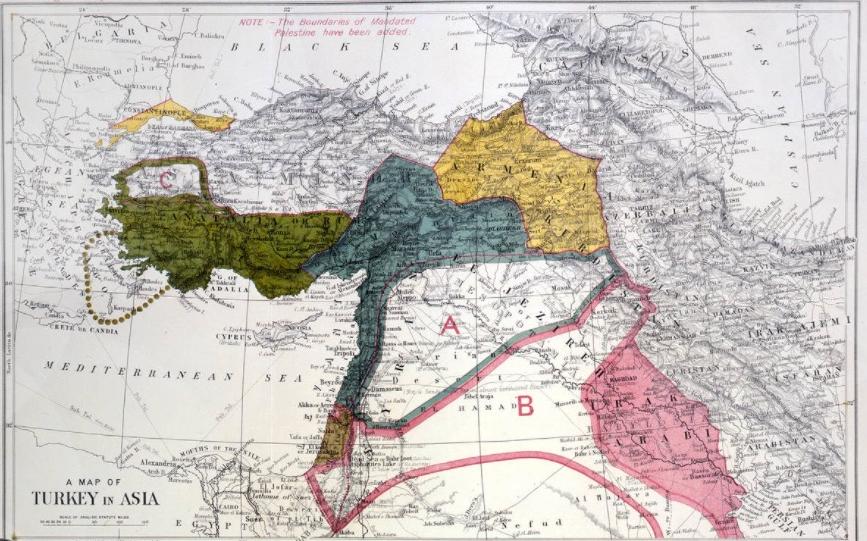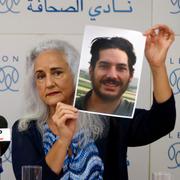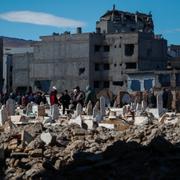bakgrund
Mellanösterns gränser har delvis sitt ursprung i Sykes–Picot-avtalet
Wikipedia (en)
The Sykes–Picot Agreement /ˈsaɪks pi.ko/, officially known as the Asia Minor Agreement, was a secret 1916 agreement between Great Britain and France, to which the Russian Empire assented. The agreement defined their mutually agreed spheres of influence and control in Southwestern Asia. The agreement was based on the premise that the Triple Entente would succeed in defeating the Ottoman Empire during World War I. The negotiations leading to the agreement occurred between November 1915 and March 1916 and it was signed 16 May 1916. The deal was exposed to the public in Izvestia and Pravda on 23 November 1917 and in the British Guardian on November 26, 1917.
The agreement is still mentioned when considering the region and its present-day conflicts.
The agreement allocated to Britain control of areas roughly comprising the coastal strip between the Mediterranean Sea and the River Jordan, Jordan, southern Iraq, and an additional small area that included the ports of Haifa and Acre, to allow access to the Mediterranean. France got control of southeastern Turkey, northern Iraq, Syria and Lebanon. Russia was to get Istanbul, the Turkish Straits and Armenia. The controlling powers were left free to determine state boundaries within their areas. Further negotiation was expected to determine international administration pending consultations with Russia and other powers, including Hussein bin Ali, Sharif of Mecca.
Given Ottoman defeat in 1918 and the subsequent partitioning of the Ottoman Empire, the agreement effectively divided the Ottoman's Arab provinces outside the Arabian peninsula into areas of British and French control and influence. An international administration was proposed for Palestine apart to the Acre-Haifa zone which was intended to be an British enclave in northern Palestine to enable access to the Mediterranean. The British gained control of the territory in 1920 and ruled it as Mandatory Palestine from 1923 until 1948. They also ruled Mandatory Iraq from 1920 until 1932, while the French Mandate for Syria and the Lebanon lasted from 1923 to 1946. The terms were negotiated by British diplomat Mark Sykes and a French counterpart, François Georges-Picot. The Tsarist government was a minor party to the Sykes–Picot agreement, and when, following the Russian Revolution, the Bolsheviks published the agreement on 23 November 1917, "the British were embarrassed, the Arabs dismayed and the Turks delighted."
The agreement is seen by many as a turning point in Western and Arab relations. It negated the UK's promises to Arabs made through Colonel T. E. Lawrence for a national Arab homeland in the area of Greater Syria, in exchange for supporting the British against the Ottoman Empire.




